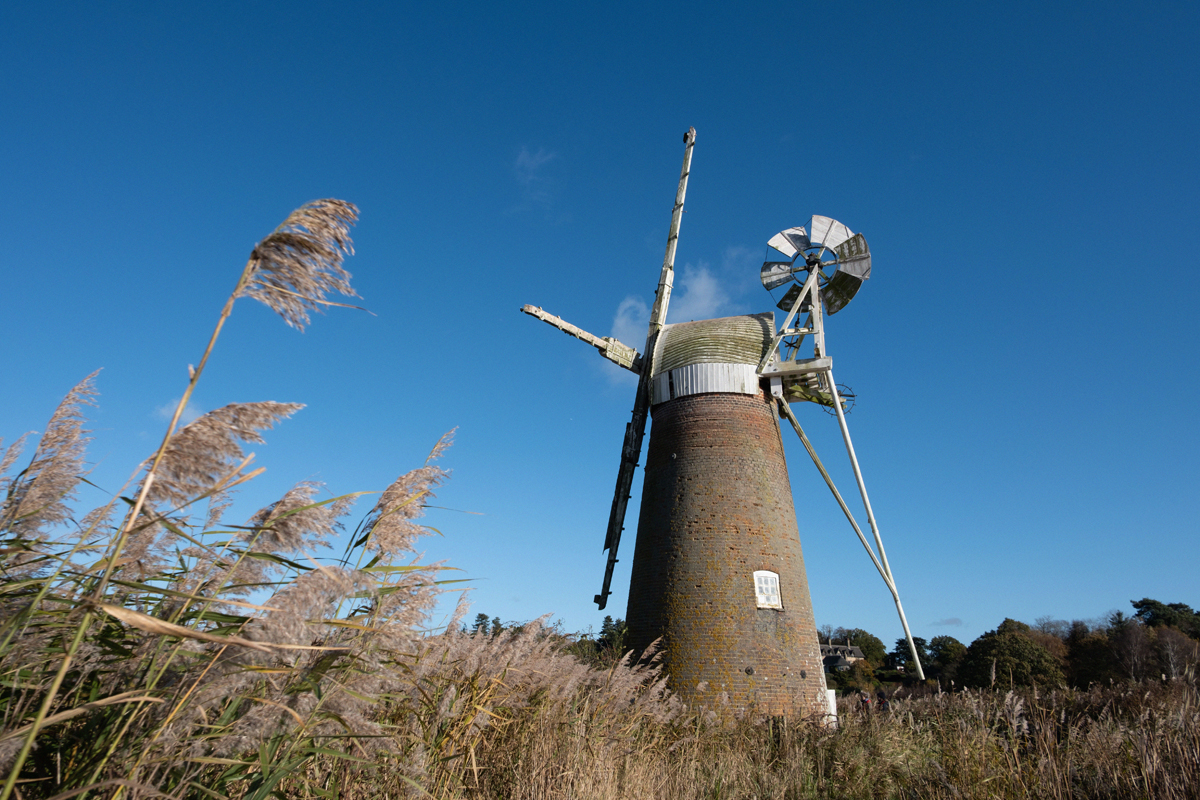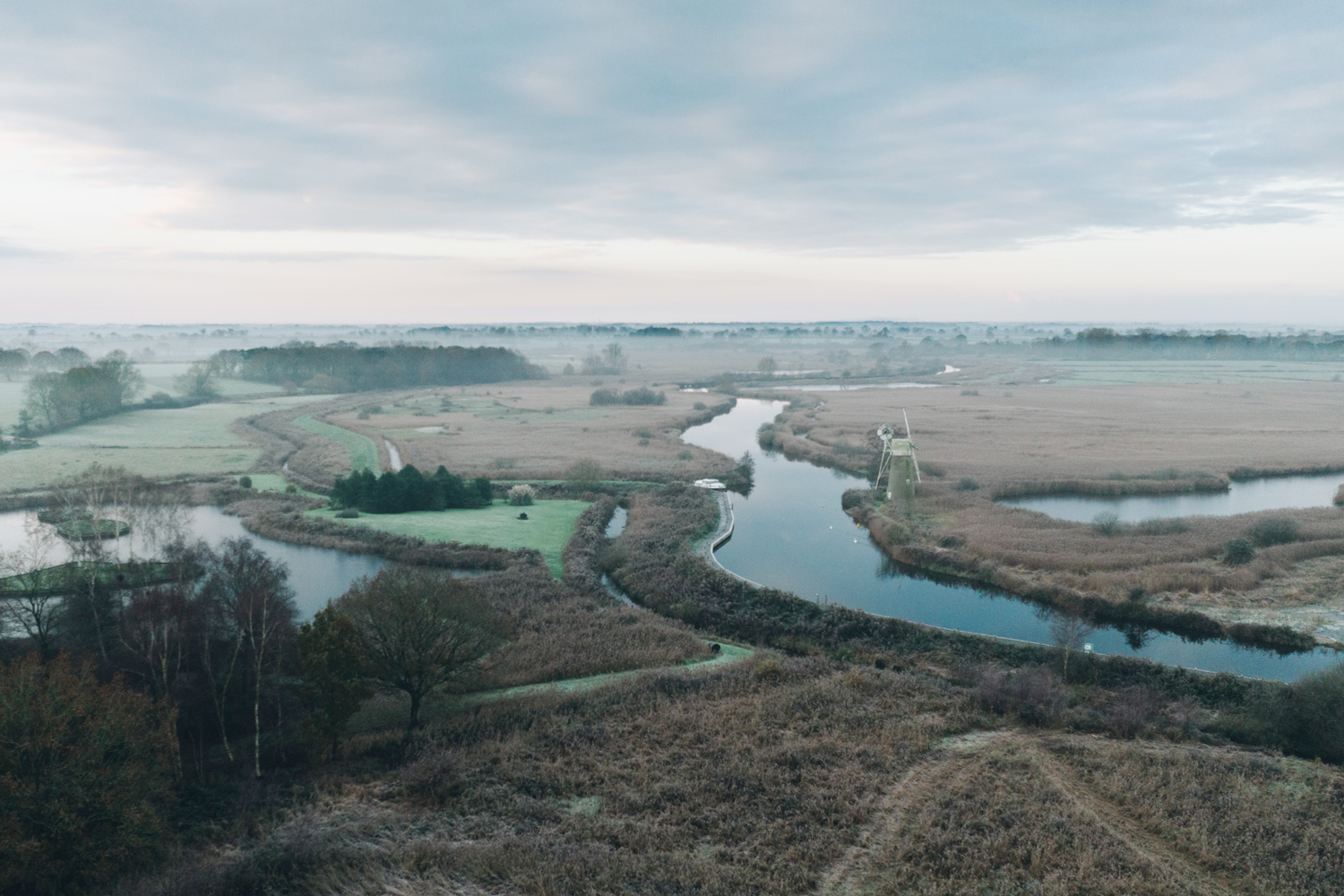Turf Fen Mill to receive restoration grant from Historic England
We're delighted to announce that Historic England has awarded a grant of £242,870 to save the Grade II* listed Turf Fen Mill which sits alongside the River Ant near How Hill.
The mill was built around 1880 by millwright William Rust to drain the surrounding marshland into the River Ant and make the fields on the west bank suitable for grazing livestock.
Standing at 31 feet high, with a brick tower and a wooden main shaft, it is topped by a boat-shaped weather-boarded cap. The mill was constructed with four double-shuttered sails, each divided into seven bays. It has two scoop wheels that could work independently, with a choice of high or low gears, an unusual design for such a structure.
The mill fell out of use in the 1920s. The structure is in poor condition and is at risk from further deterioration. The ground floor regularly floods, the cap and stocks need attention, there are currently no sails, the mill is not in use and it can only be accessed by river. It was added to Historic England’s Heritage at Risk Register in 2023.
Owned by Norfolk County Council, Turf Fen Mill is one of three drainage mills that sits on the How Hill estate, home of the How Hill Trust. The mill is one of the Broads' best-known landmarks and is popular with photographers and those fascinated by the working history of the landscape.
Andrew Farrell, Broads Authority Partnership and External Funding Manager commented:
"Turf Fen is one of our most iconic mills and an important part of the Broads National Park's built heritage.
This investment from Historic England will help to ensure that the skills to repair and restore these mills remains in our area and ensure that this beautiful and rare example of the engineering that shaped our landscape remains for many more decades to come."
It is planned that repairs to the mill will be completed by 2026. Norfolk County Council is working with the Norfolk Windmills Trust and the Broads Authority and with the support of the How Hill Trust to develop skills training, outreach activities and historic interpretation around the three remaining mills in this area.
The repair project will be used to further support skills development for young millwrights who have benefitted from training under the Broads Authority’s recent mills training programme, part-funded by the National Lottery Heritage Fund.
Sarah Morrison, Historic England Architect, said: “The Turf Fen windpump is a familiar landmark on the Broads and an important part of the local landscape story. This exciting partnership project with Norfolk County Council, Norfolk Windmills Trust and the Broads Authority will repair and protect the building for years to come, enable better access to the site and tell the story of how such mills shaped the local landscape.”
Cllr Phillip Duigan, Chair of Norfolk Windmills Trust, which maintains the building, said: “I’m thrilled that Norfolk County Council has secured this grant from Historic England to carry out the restoration works. Norfolk is famous for its attractive and diverse landscape. Working together with partners to secure funding like this means we can protect important landmarks like Turf Fen Mill and safeguard them for Norfolk and its future generations.”
Further updates on the progress will be shared in due course.
Thursday 8 February 2024



